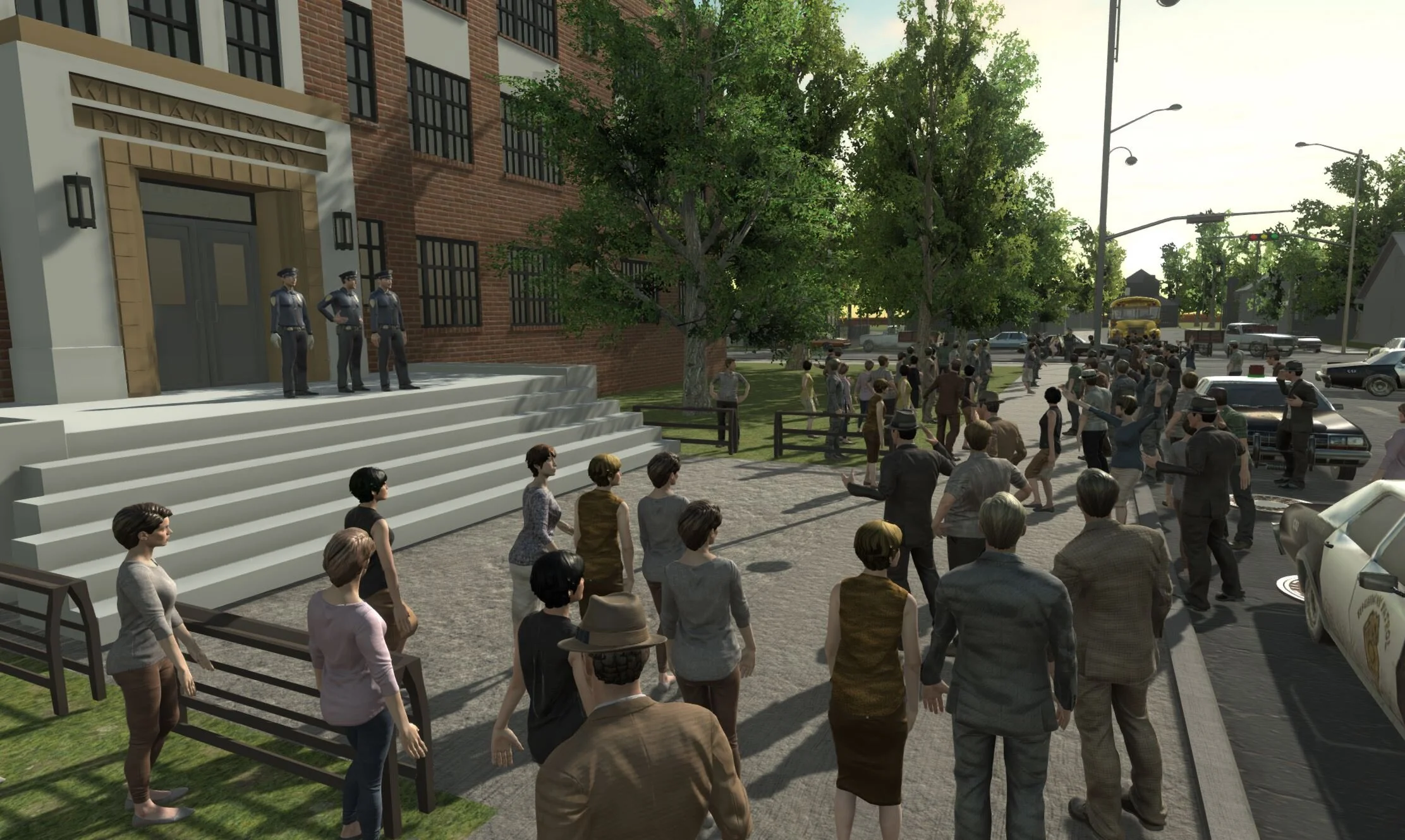DESIGNING FOR NARRATIVE PERFORMANCE IN VIRTUAL REALITY
An ongoing virtual reality project created by Tori Campbell and Abigail Ayers for the Design MFA program at Ohio State University utilizes motion capture and virtual reality tools to bring children’s stories into an immersive world, examining how these narratives can be explored using new technologies and methods of production. This project was utilized as a case study for Abigail’s thesis paper, The Collaborative Nature of Designing Narrative VR Applications, which outlines a framework for designers who are creating narrative VR applications that focuses on the balance between the user’s contributions and the designer’s choices.
Our current case study is the story of Ruby Bridges, one of five African-American girls to be integrated into an all-white school in New Orleans, LA during 1960. But, of those girls, she was the only one who would attend William Frantz Elementary School. She was 6 years old. During her first day there, her parents didn’t prepare her for what she was about to encounter. They simply told her that she would be attending a new school, and to behave herself.
That morning, four U.S. Federal Marshals arrived at her home to escort her to her new school. They instructed her to not look around, but to look straight ahead and follow them up to the front steps of the school. When they arrived, mobs surrounded the front of the school and the sidewalks surrounding the area, protesting the desegregation of schools. People were shouting at Ruby, telling her they would poison her, and showing her black dolls in coffins.
By examining different forms of interaction and immersion, we are working towards designing an experience with strong emotional and empathetic impact for the user.
Process work and further details can be found over on my Blog.







